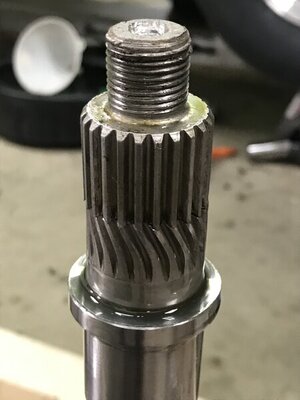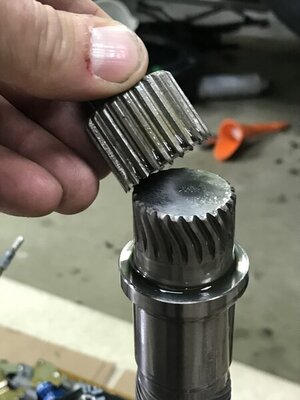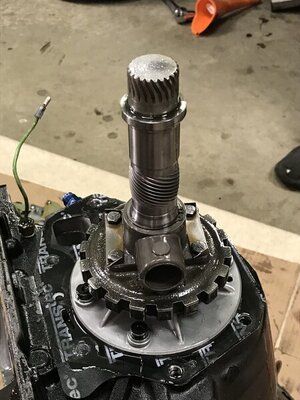It looks like you are doing a great, careful 727 disassembly there, Hawk. Lots of clear pictures as well. I will offer some suggestions, based on what has worked for me. I have rebuilt a lot of these things over 35 years, both for myself and friends. Since most of these have been for performance cars, I have almost always included a shift kit.
It is good to see the 4 gear planetaries, as this is what the good 440 transmissions come with as well. I have never had a problem with these, but I see other guys have torn the splines out of them. More h.p. than my customers have had, I guess. Be sure to check your front drum and rear output shaft support for wear by the seal rings. I find that the rear band rarely has to be changed, but the front one should always be replaced. I noticed that you have the low performance heavy governor weight. The heavier the weight is, the lower the Rpm that the trans will upshift. A&A Transmissions have weight sets for different upshift speeds. The front servo assembly is also a low performance piece. As the 70's progressed, Chrysler made changes to the 727 to soften the shifts, and this was one of them. If you have access to an earlier 727 with the front piston with smaller diameter push rod and inner and outer spring, this is the one to use. Toss the outer spring and use just the inner one. As an alternative to this, Mopar Performance used to offer an upgraded front servo piston assembly with a red spring. A&A still have these available. I could not tell by looking at the picture of the rear band servo piston whether it has a spacer inside the spring. Some shift kits come with this spacer. The purpose of this spacer is to not let the spring compress, thereby speeding up the band apply. I have have found if this is not used, and other shift kit modifications are are done, the 1 to 2 shift feels like it binds up. I also use the 4.2 lever when I can, but the 3.8 is also good. I also like the steel core moulded A-518 pan gasket. They are expensive because you can only get them at the Dodge store, but the molded bolt hole o-rings reduce leaks. They are also reusable.























